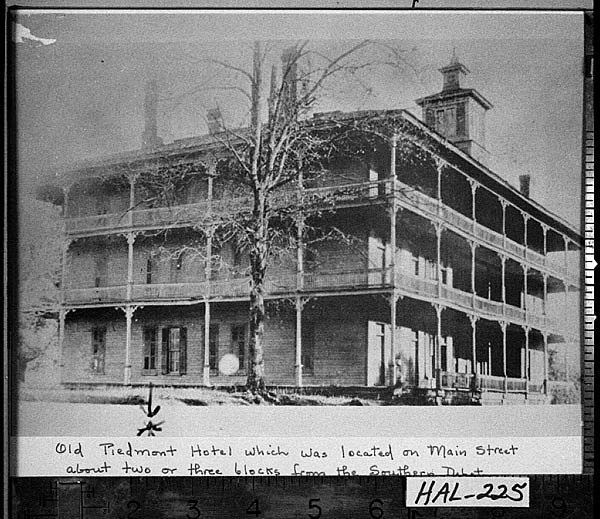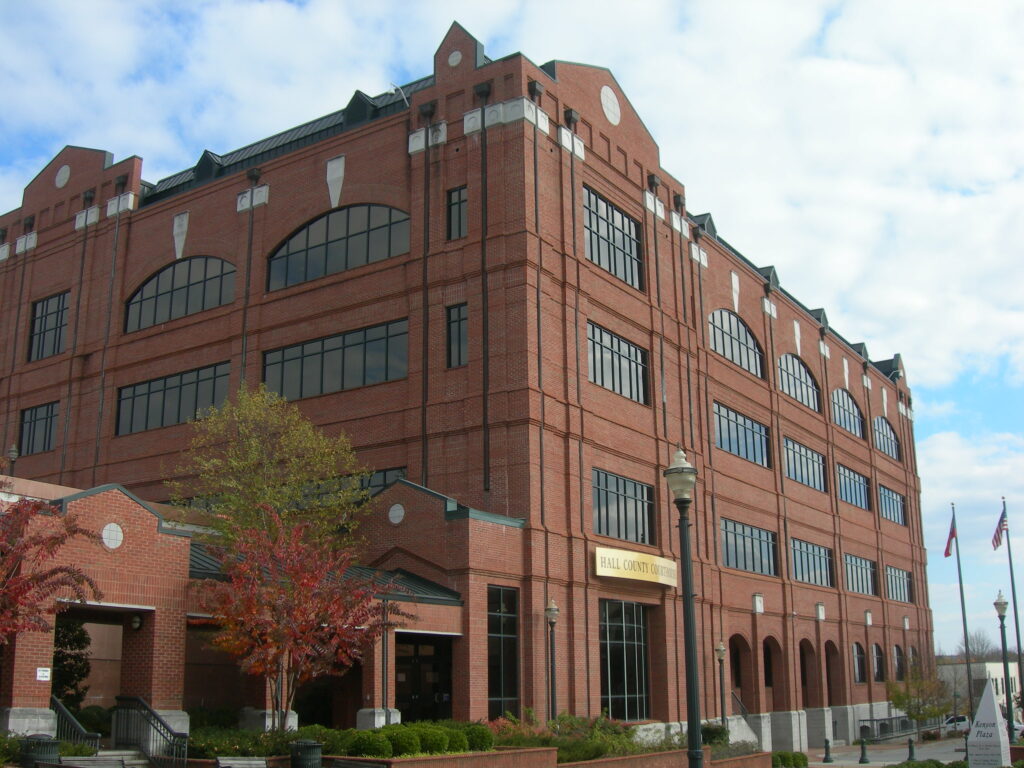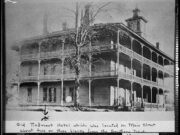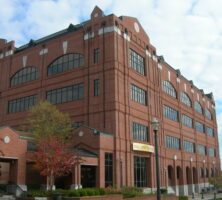Hall County, in northeast Georgia, was created in 1818 from Native American lands and named for Lyman Hall, signer of the Declaration of Independence and Georgia’s governor from 1783 to 1784. Hall was the forty-fifth Georgia county to be created. Its seat of government, Gainesville, was incorporated in 1821.
Early settlers were largely Scots-Irish, English, and German stock from the Carolinas and Virginia—chiefly Baptists, Methodists, and Presbyterians. Few African Americans lived in this area of small farms at the time. The discovery of gold north of Hall in 1828 attracted thousands of newcomers to the area. The passing of the gold rush in the 1830s saw the return to the small-farm grain and livestock agricultural economy.
Though distant from the combat of the Civil War (1861-65), Hall County inhabitants provided nine companies of men to the Southern cause. Hall County’s most significant Civil War connection, however, is a postwar resident, General James Longstreet, who moved to Gainesville in 1875 as postmaster and hotel operator, anticipating that the town would become a southeastern railroad hub. Longstreet purchased the forty-room Piedmont Hotel and 115 acres just outside the town, where he raised poultry and planted vineyards.

Railroads came to Hall County in 1871, contributing to the creation of a local textile industry by the turn of the century. Three large mills dominated nonagricultural employment in the county between the 1920s and midcentury.
After the destructive Gainesville tornado of 1936 and with the onset of World War II (1941-45), Hall County, especially Gainesville, became the location for the rise of the state’s poultry industry. The Hall County seed-and-feed store operator Jesse Jewell was the father of large-scale agricultural growing and processing and pioneered the use of vertical integration in Georgia’s poultry industry. Poultry supplanted textiles as the leading industry in the area, and today Gainesville claims the title “Poultry Capital of the World.” Several major poultry producers, including Gress Foods, King’s Delight, Mar-Jac Poultry, and Pilgrim’s Pride are located in the county.
The damming of the Chattahoochee River in the 1950s, flooding 38,000 acres, created Lake Lanier, which brings 12 million visitors each year to the area. Twenty-first-century Hall County is largely the product of Lake Lanier’s influence.

According to the 2020 U.S. census, the county population is 212,692, an increase from the 2010 population of 179,684. In addition to Gainesville, other incorporated towns are Clermont, Flowery Branch, Oakwood, and parts of Braselton, Gillsville, Lula, and Rest Haven.
The booming, service-centered city of Oakwood, on I-985, is a gateway on the busy pathway to Road Atlanta and Chateau Elan. Just south of Oakwood is Flowery Branch, home to the $20 million training complex of the Atlanta Falcons. Lula, in the more mountainous northeastern part of Hall, is a heritage-minded community whose annual Railroad Days each spring are well attended. Another attraction is the fall festival of Mule Camp, named for Mule Camp Springs, a natural spring just south of Gainesville’s city square where early travelers and traders once gathered to water their stock.
Gillsville is a pottery center, harking back to the clay artists of the county’s earliest days. Named after Major Josiah Gill, who owned the town’s general store, Gillsville was first called Stones Throw by railroaders who were describing its short distance from Maysville, a town that today straddles the Banks and Jackson county line. To the northeast, Clermont (originally named Dip) was established in 1913 as an early tourist and trade center.

Latino residents now account for 28 percent of the county’s population. Large numbers have found employment in poultry processing and other low-wage industries and most reside in neighborhoods with poverty rates that exceed 50 percent. Spanish-language media and an impressive Hispanic cultural infrastructure continue to grow as old-line churches, businesses, and services make progress in the transition to bilingual communication.
Hall County is northeast Georgia’s center for banking, industry, health care, and culture. Public education is well served in the Gainesville and Hall County systems, and private education grows apace. Brenau University (including the Women’s College), Riverside Preparatory Academy, University of North Georgia (formerly Gainesville State College), and Lanier Technical College provide preparatory and postsecondary educational options. More than twenty arts-related organizations, most based in Gainesville, provide a wide array of cultural opportunities.









